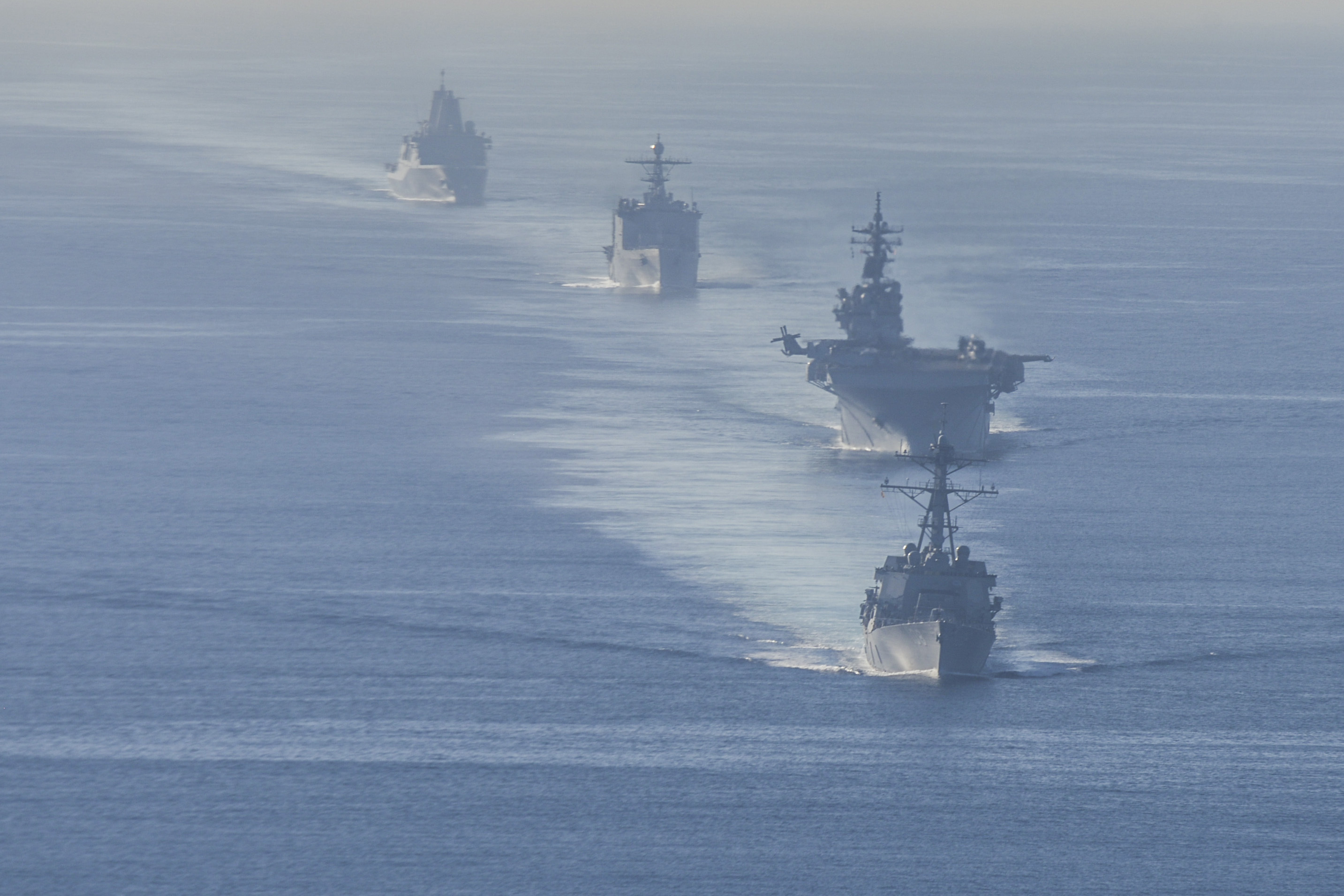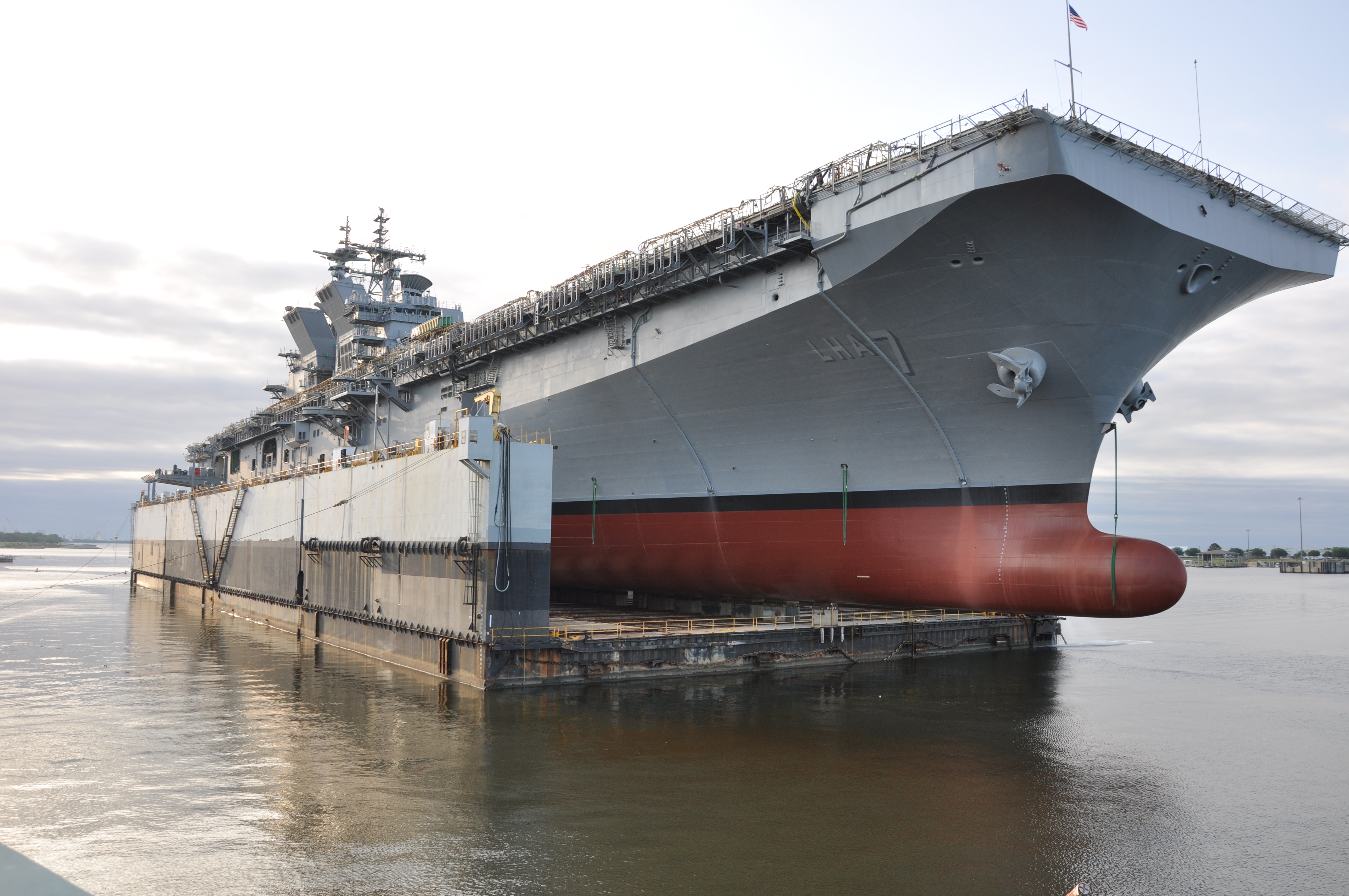
Lawmakers bought themselves two more weeks to pass a defense spending bill, after extending the continuing resolution that has funded the government since the start of the fiscal year, but the Navy is already seeing decreased readiness as a result of operating under a CR and would face severe procurement challenges if a defense budget isn’t passed by the end of the month.
The House and Senate voted Thursday night to fund the government at last year’s spending levels through Dec. 22, after the original CR that spanned Oct. 1 through Dec. 8 was set to expire tonight. Lawmakers avoided a government shutdown, but with several political issues hanging over the process of passing appropriations bills, it is unclear whether the Senate will pass its appropriations bills and agree to a compromise with the House appropriations bills within the next two weeks.
The Navy and Marine Corps planned to boost operations and maintenance spending in Fiscal Year 2018 – specifically in their spares and logistics accounts, to keep more aircraft and ships ready for operations – and not having access to that higher spending level in the first quarter of the fiscal year has already hurt readiness rebuilding efforts, the Navy’s budget office told USNI News in a statement provided today.
“Assuming that the Department will receive an enacted budget funded at the PB18 (President’s Budget 2018) request, Navy will continue fleet operations and training with no reductions in flying hours. However, we will delay replacement of spares and repair parts on supply shelves in our ships, submarines, and aircraft carriers across the non-deployed Fleet to cash flow our flying hour program,” according to the statement.
“The impact of not purchasing replenishment spares is that training and readiness will degrade, so even through the Navy intends to continue flying and steaming ships at home, the efficacy of operations and training will be degraded as we cannot source spare parts for our ships and aircraft that we depend upon for this very same pre-deployment training.”
Under a continuing resolution, the services must spend at the previous year’s budget, rather than the current one. No new programs can start that were not funded the previous year – which hurts the Navy’s shipbuilding budget especially – and spending increases are not allowed. In the case of readiness spending – on training or spares, for example – the Navy could begin its ramp-up of buying spare parts now, in anticipation of the full amount of money coming later, but the service then risks running out of money before the end of the year if Congress ultimately cannot pass a FY 2018 spending bill and forces the Navy to operate under a full-year CR, which last happened in 2013. Conversely, if the Navy gets off to too slow a start on its spending ramp-up, it may not be able to get contracts in place and spend the money fast enough once the FY 2018 bill is passed.
“Because the FY18 requested funding is much higher than the FY17 amounts for Navy O&M (operations and maintenance), if we do not spend close to the planned FY18 execution, the result is to have too little time once an appropriation occurs at the higher level to meet Congressionally mandated execution benchmarks of 80-percent obligations by 31 March,” according to the statement.
As long as the CR doesn’t extend into January or later, the Navy will not cancel ship maintenance availabilities or reduce flying hours for squadrons. As a result, though, “we are decrementing most other aspects of O&M so that current and deployed operations are properly funded.”
On the training side of operations and maintenance, negative consequences of a CR are already apparent.

“Impacts begin immediately, within the first 30 days of a CR. By 90 days, the lost training is unrecoverable due to subsequent scheduled training events. These training losses reduce the effectiveness of subsequent training events in FY18 and in subsequent years,” according to the statement. The 90-day mark would come at the end of December.
“Most major exercises and training events are scheduled for the spring and summer, and presume individual and unit-level training was completed. Training scheduled during the period of the CR, however, must be re-scoped and scaled to incorporate only mission-essential tasks and objectives, so units enter the major exercises less prepared.”
On the procurement side, many program offices avoid awarding contracts or reaching major milestones in the first quarter of the fiscal year, since the last nine years have begun with a CR. Still, a further extension if lawmakers cannot pass a defense spending bill by Dec. 22 would begin to cause some serious procurement headaches.
Already the Navy has been unable to spend money to finish up ships it bought in past fiscal years – in many cases a little extra money is needed to get the ships across the finish line and successfully delivered and commissioned into the fleet, or extra money is needed if the construction overruns the costs Congress allotted.
The Navy told USNI News that, under the continuing resolution, it cannot complete eight Littoral Combat Ships; four Arleigh Burke-class destroyers; amphibious assault ship Tripoli (LHA-7); aircraft carrier USS Gerald R. Ford (CVN-78), which already commissioned into the fleet but may have remaining work that was deferred until the post-shakedown availability; and landing craft air cushions (LCACs) 101-103.

Come January, the Navy plans to buy many ships, and a further-extended CR would not allow that. The Navy plans to award a $466-million contract in January for the second John Lewis-class T-AO(X) fleet oiler; a $76-million contract in January for a T-ATS towing and salvage ship; a $32-million contract in January for the LCU-1700 amphibious surface connector; and a contract in January for DDG-51 advance procurement on the Vertical Launch System. In June, the Navy would award a five-year multiyear contract award for the DDG-51s.
Until the Navy and Marine Corps are operating under an actual FY 2018 appropriations bill, the services cannot begin on several new-start programs and program increases. For new starts, the services plan to spend $162 million on the Amphibious Combat Vehicle, $40 million on the MQ-4 unmanned aerial vehicle, $21 million to buy 90 small-diameter bombs, $74 million on LCS in-service modernization contracts, $11 million on advanced arresting gear for the next aircraft carrier, and $53 million in F/A-18 Super Hornet advance procurement.
On quantity increases, the services plan to buy 527 Joint Light Tactical Vehicles in 2018 compared to 192 in 2017; four CH-53K heavy-lift helicopters instead of two; 20 F-35B Joint Strike Fighters instead of 18; 110 LCS module weapons instead of 24; 25 Long-Range Anti-Ship Missiles (LRASM) instead of 10; 17 Mk-48 torpedoes instead of 11; 185 AIM-9X missiles insetad of 152; and 110 Hellfire missiles instead of 100. None of these quantity increases can take place under a CR.
A longer CR would spell a lot of trouble for the ship maintenance world. No ship availabilities were deferred in FY 2017 due to funding – though leaders feared some would be deferred or canceled due to funding challenges in 2017 and a CR that lasted through the end of April.

Still, “because the FY18 Ship Maintenance program is at an all-time high for funding, the port-loading plan and integrated ship maintenance schedule is pressurized. For FY18, 14 ships have begun their availabilities,” according to the Navy statement. If lawmakers pass a defense appropriations bill in the next two weeks, “the Navy believes it can manage the ship maintenance program without cancelling any availabilities. If the CR were extended beyond late January 2018, the Navy may delay the induction of 10 ships, which will exacerbate the planned ship maintenance in FY18, and will slip ship availabilities into FY19, further impacting that plan.”
“CR funding shortfalls have been exacerbated by funding for initial repairs on the Fitzgerald (DDG-62). Using tools such as split-funding contract line items and minimally funding Navy Working Capital Fund activities, the Navy has managed not to defer any availabilities during the current CR period. However, the following FY18 ship availabilities will be considered for schedule slip if the CR were to be extended through six months,” the statement continued, listing at-risk availabilities for: USS Coronado (LCS-4), set to begin maintenance on Dec. 15 in San Diego; USS Port Royal (CG-73), set to begin maintenance on Dec. 22 in Hawaii; USS Princeton (CG-59), set to begin maintenance on Dec. 25 in San Diego; USS San Diego (LPD-22), set to begin maintenance on Dec. 31 in San Diego; USS Carter Hall (LSD-50), set to begin maintenance on Jan. 22 in Norfolk, Va.; USS Oscar Austin (DDG-79), set to begin maintenance on Feb. 2 in Norfolk; USS Vella Gulf (CG-72), set to begin maintenance on Feb. 19 in Norfolk; USS James E. Williams (DDG-95), set to begin maintenance on Feb. 19 in Norfolk; USS Mahan (DDG-72), set to begin maintenance on Feb. 19 in Norfolk; and USS Chafee (DDG-90), set to begin maintenance on Feb. 26 in Hawaii.
Aircraft maintenance depot inductions wouldn’t be impacted unless the continuing resolution were to be extended for the full fiscal year, the statement added.





